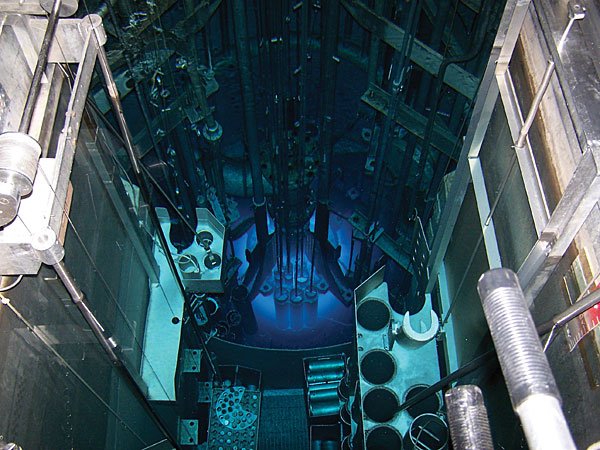US output of critical medical isotope to begin this year
DOI: 10.1063/PT.3.2240
Striving to eliminate the use of highly enriched uranium (HEU) in production of the world’s most widely used medical radioisotope, the Department of Energy in November awarded $10.9 million to NorthStar Medical Radioisotopes to produce molybdenum-99. The Wisconsin company will, ironically, use one of the last remaining HEU-fueled nuclear reactors in the US to make the product. HEU, which is at least 20% 235U, is considered to be a proliferation risk because it is an important step toward producing nuclear weapons–grade uranium, usually defined as 85% or greater 235U.
The US has no domestic source of 99Mo, whose decay product, metastable technetium-99, is used in 16 million US medical procedures annually. Most of the world’s output of the short-lived isotope is produced in a few research reactors in Canada and Europe that use fission targets enriched to 93% 235U. A South African reactor has been partially converted to use low-enriched uranium (LEU) targets. DOE’s National Nuclear Security Administration (NNSA) has been paying NorthStar and four other US companies to develop production technologies for 99Mo that don’t require HEU.
NorthStar is developing two non-fission-based approaches to isotope production. One technology, in which a neutron is captured by 98Mo, is being pursued in collaboration with the University of Missouri, which operates an HEU-fueled research reactor known as MURR. The other process will use gamma rays provided by an accelerator to transmute 100Mo through emission of a neutron. The NNSA’s Global Threat Reduction Initiative (GTRI) has provided $4 million to support development of NorthStar’s accelerator technology.
Jim Harvey, NorthStar’s chief science officer, says that production at MURR will commence in mid 2014, pending Food and Drug Administration (FDA) approval, at an initial rate of 100 six-day curies per week. A six-day curie is the number of curies remaining in a shipment of 99Mo six days after it leaves the producer’s facilities. The half-life of 99Mo is 66 hours. Capacity of 3000 six-day curies per week is expected to be attained at MURR in late 2015, depending on demand. That output should satisfy half of projected US demand for the isotope, he says.
The university has committed to convert MURR to LEU fuel as soon as that fuel is available, and the GTRI’s reactor-conversion program is working to develop an LEU fuel that will maintain performance. Ralph Butler, MURR director, says the new LEU fuel won’t become available until after 2020.
The 10-MW reactor is the highest-power university reactor in the US, with 10 times the neutron flux of LEU-fueled research reactors such as the one at the University of Wisconsin–Madison; NorthStar has its headquarters in Madison. MURR has contracted to provide irradiation and processing services to NorthStar, and Butler says the university’s intent is to produce 99Mo “for the foreseeable future.”

The University of Missouri’s research reactor will irradiate targets of molybdenum-98 for NorthStar Medical Radioisotopes through a cooperative agreement funded by the National Nuclear Security Administration.
UNIVERSITY OF MISSOURI

NorthStar is matching the amount of the NNSA’s latest award. It recently announced it has secured $13.5 million from private investors and now has the capital needed to begin commercial 99Mo production.
The company is expecting its accelerator process to begin producing 99Mo in late 2016, ramping up to full-scale operation by early to mid 2017, Harvey says. The MURR and accelerator combined output will completely satisfy US demand for the isotope and possibly export material as well, Harvey says. A full-scale production test run is about to commence in an accelerator at Argonne National Laboratory, and NorthStar is purchasing an accelerator for its production facility to be built in Beloit, Wisconsin.
Butler says that MURR produced 99Mo from 1967 through 1984 using neutron capture but stopped when market demand shifted to the higher-specific-activity 99Mo produced by 235U fission. The specific activity of the fission product is two to four orders of magnitude greater than that from the neutron-capture process, because most of the Mo from neutron capture remains as 98Mo. NorthStar’s proprietary generator technology will produce the same amount of usable 99mTc from the neutron-capture product as from the fission product, says Harvey. The Missouri reactor currently produces 35 other radioisotopes, including three FDA-approved radiopharmaceuticals that were invented there.
More about the Authors
David Kramer. dkramer@aip.org
